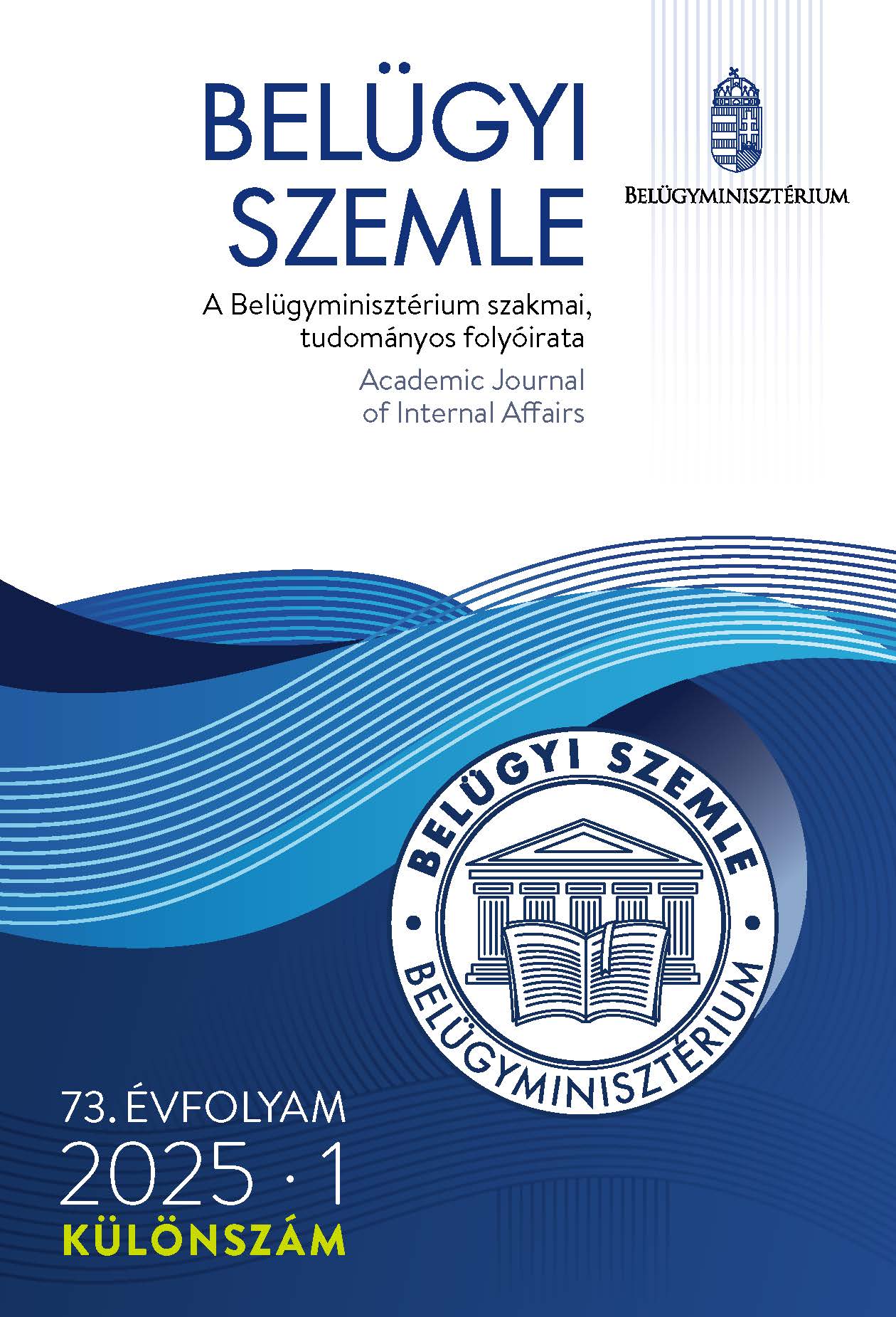Abstract
Aim: This study presents a new way of spatial representation and map display of crime.
Methodology: The author uses Köppen's meteorological classification as a basis, and based on this model, using the characteristics of law enforcement, he developed his new kind of criminal classification system.
Findings: The advantages of the system developed by the author include the fact that territorial differences can be depicted more vividly compared to previous methods of representation, it better shows the proportion of individual types of crime in a given area compared to total crime (the 'quantity' and 'quality' are depicted simultaneously).
Value: The system is easy to learn and overview, and several crimes can be depicted on the map at the same time.
References
Dobosi Z., & Felméry L. (1994). Klimatológia. Nemzeti Tankönyvkiadó.
Guerry, A. M. (1833). Essai sur la statistique morale de la France. Crochard.
Mátyás Sz. (2023). Bűnözésföldrajz (egyetemi jegyzet). International Criminal Geographical Association.
Mátyás Sz., & Pődör A. (2022). Rendészeti térinformatika. Ludovika Kiadó.
Mátyás Sz., & Sallai J. (2014). Kriminálgeográfia. In Ruzsonyi P. (Szerk.), Tendenciák és alapvetések a bűnügyi tudományok köréből (pp. 335–353). Nemzeti Közszolgálati és Tankönyv Kiadó Zrt.
Piskóti-Kovács Zs. (2014). A bűnözésföldrajz modern irányzatainak alkalmazási lehetőségei különböző területi szinteken (Ph.D. értekezés). Miskolci Egyetem.
Patkós Cs., & Tóth A. (2012). A bűnözés néhány térbeli jellemzője a rendszerváltás utáni Magyarországon. Területi Statisztika, 20(3), 250–263.
Sallai J., Tihanyi M., Vári V., & Mátyás Sz. (2016). A „jó rendészet” közpolitikai kapcsolódási lehetőségei. In Kaiser T. (szerk.), A jó állam nagyító alatt: speciális jelentések A-tól V-ig (az adóbürokráciától a versenyképességig) (pp. 83–121). Dialóg Campus Kiadó.
Tóth G. (2014). Térinformatika a gyakorlatban közgazdászoknak. Miskolci Egyetem.

This work is licensed under a Creative Commons Attribution-NonCommercial-NoDerivatives 4.0 International License.
Copyright (c) 2025 Academic Journal of Internal Affairs
